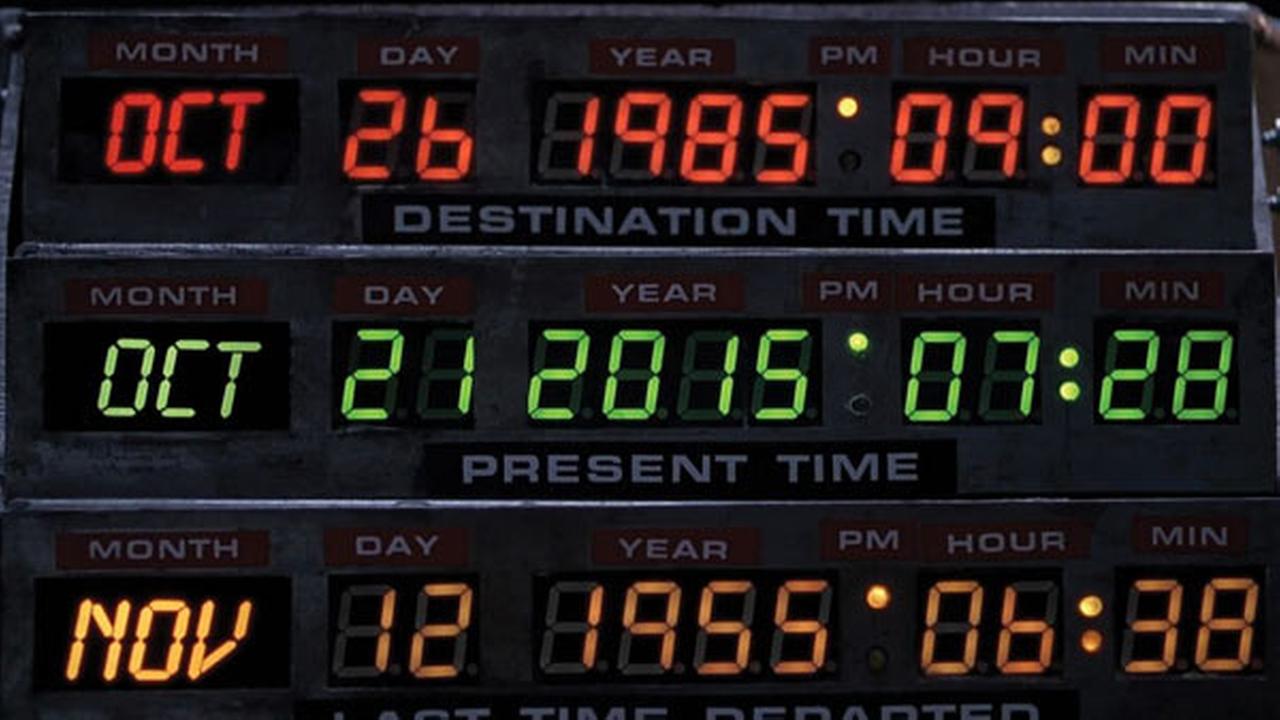Back to the Future, the 1985 sci-fi classic, is in the news this week for a special anniversary. The protagonist of the movie, Marty McFly, time-travels from 1985 to 1955 and back again. In the process, he saves his mentor, mad scientist Doc Brown, and assures his own existence by setting up his parents as high school seniors. At the end of the movie, Marty arrives home again only to be whisked off an another adventure—this time, to the future. When Marty and his companions fly off in Doc’s DeLorean-sedan-cum time-machine, they’re headed to October 21, 2015: This Wednesday. Director Robert Zemeckis and screenwriter Bob Gale’s vision of the future—shown four years later in Back to the Future Part II—doesn’t disappoint. Featuring hoverboards, flying cars, and robotic dogwalkers, the movie’s version of 2015 offers a number of technological marvels. But how close were their predictions?
Hoverboards and flying cars
Flying cars have long been a mainstay of science fiction books, movies, and comics. Despite their absence in the average consumer’s life, flying cars have actually been both theoretically and practically possible for decades—but haven’t caught on for safety and price reasons. In 1917, the first flying car was developed by Glenn Curtiss, a rival of the Wright Brothers. The Curtiss Autoplane looked like a streamlined sedan with a giant propeller and wings, and was operated like an airplane. Since then, dozens of prototypes and test models have been created by Ford, Hiller Helicopters, and the U.S. Army.
Hoverboards were initially pioneered by Hiller in the ’50s. Today, boards are being made to fly using the technology found in hovering maglev trains, known as magnetic levitation. A video published on Yahoo Tech shows the article’s author attempting to ride a hoverboard prototype, called the Hendo Hoverboard. Developed by Arx Pax, a California-based company, the board is far from perfect. Balance is precarious, and the vehicle operates only on metallic surfaces; but the invention takes us one step closer to emulating the technology shown in the film.
Smart watches & smart glasses
Wearable tech is a major step towards living in the world of science fiction. Today, gadgets like Google Glass and the Apple Watch are probably the most comparable technologies to the ones that Zemeckis predicted. Besides being featured in Back to the Future, wearable radios and computers have been depicted in other famous science fiction franchises such as Star Trek, Flash Gordon, and Buck Rogers.
The technology used is called augmented reality, and it’s at the cutting edge of modern entertainment and computer interface design. Augmented reality allows for the incorporation of digital information and simulated graphics into a new perception of the world that is halfway between virtual reality and reality.
Interestingly, the reason Google Glass and the Apple Watch haven’t caught on is very different from the factors that shot down the flying cars. Whereas this type of technology was perceived as being sleek and alluring by futurists in the 20th century, today these techno-accessories are being viewed as silly and impractical—impeding further development.
Widespread automation
In Back to the Future, robots walk dogs, pump gas, and take orders at cafés. This type of widespread automation could be possible today, but the development of these robots faces the same issues as flying cars: High cost and low interest.; however, progress is being made.
A new type of robot has been created by Rethink Robotics. The general-purpose robot, called Baxter, is unspecialized and able to watch and then learn a variety of simple tasks—making it likelier to replace humans for certain jobs.
However, specialized robots exist, too, and have already begun to be put to work in several industries. Robot-staffed restaurants are open to the public in Germany, China, and Singapore, and plenty of other automations have become common since the ’80s, such as package-delivery drones, automated gas pumps, Siri, and self-driving cars.
The Back to the Future films were hugely influential. They not only marked a milestone in special effects technology and were quoted in the 1986 State of the Union address, but caused an entire generation to mispronounce the word ‘gigawatts.’ At least a few inventions were developed specifically because they existed in Back to the Future—like Nike’s limited edition version of Marty’s Hyperdunks (though they do lack the coveted auto-lacing feature)—because someone saw them in the film and thought, “I could build that.” So, in a way, Doc Brown did take us to the future after all.








